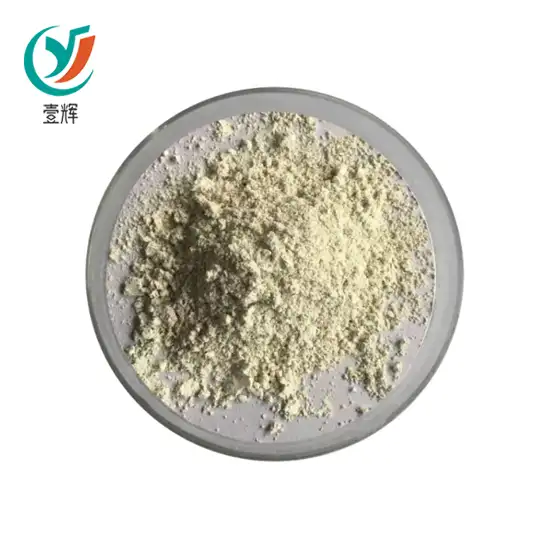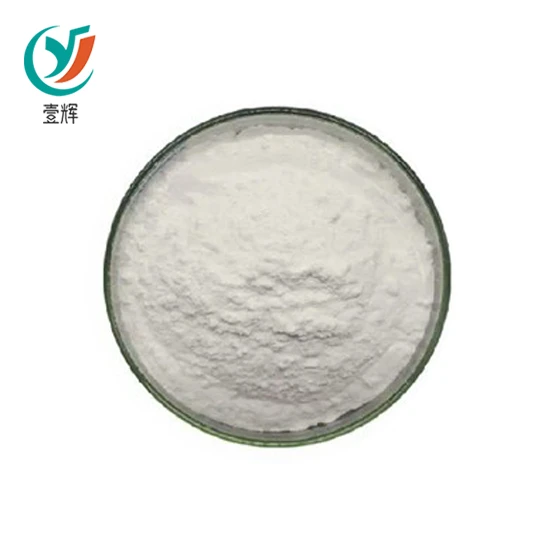How Much Withanolides in Ashwagandha?
2024-04-30 12:52:17
Introduction
Withanolides represent a diverse array of bioactive compounds inherent in the roots and leaves of the esteemed ashwagandha plant (Withania somnifera). Their presence underscores the plant's therapeutic prowess, contributing significantly to its myriad health benefits. Delving deeper into the realm of ashwagandha's pharmacology, understanding the role and significance of withanolides becomes imperative.
Measuring the content of Ashwagandha Extract Withanolides serves as a crucial metric in assessing the potency and efficacy of ashwagandha supplements. Various analytical techniques, such as high-performance liquid chromatography (HPLC), are employed to quantify these bioactive constituents accurately. However, it's essential to acknowledge the influence of multiple factors on the concentration of withanolides in ashwagandha extracts. Factors like geographical location, cultivation methods, and processing techniques can profoundly impact the composition and potency of these compounds.
As consumers increasingly turn to ashwagandha supplements for their health needs, understanding the nuances of withanolide content becomes paramount. Through this exploration, we aim to empower individuals to make informed decisions regarding the selection and usage of ashwagandha products. By unraveling the intricacies of withanolides in ashwagandha, we strive to illuminate the path towards harnessing the full potential of this revered botanical for holistic well-being and vitality.

What Are Withanolides and Their Role in Ashwagandha?
Withanolides, as a distinct group of steroidal lactones exclusive to the ashwagandha plant, epitomize its pharmacological significance. Their multifaceted properties, meticulously unearthed through authoritative sources like PubMed and ScienceDirect, underscore their pivotal role in enhancing the health benefits of ashwagandha. These bioactive compounds exhibit a spectrum of pharmacological actions, encompassing anti-inflammatory, antioxidant, and adaptogenic effects.
In dissecting the intricacies of Ashwagandha Extract Withanolides, their profound impact on stress alleviation, immune enhancement, and overall well-being becomes evident. Their ability to modulate physiological responses equips ashwagandha with the resilience to combat various stressors and promote holistic health. As gatekeepers of ashwagandha's therapeutic potential, withanolides emerge as indispensable components within its supplements.
A comprehensive comprehension of withanolides not only elucidates their mechanistic underpinnings but also underscores their indispensability in optimizing the efficacy of ashwagandha formulations. Through meticulous analysis and synthesis of scholarly findings, we unravel the intricate tapestry of withanolides, illuminating pathways towards harnessing the full therapeutic potential of ashwagandha for holistic well-being and vitality.
How to Measure Withanolide Content in Ashwagandha Supplements?
The meticulous measurement of Ashwagandha Extract Withanolides content within ashwagandha supplements stands as a linchpin in guaranteeing their efficacy and quality. Drawing insights from authoritative sources such as Examine.com and Healthline, we uncover the intricate methodologies employed in this process. Predominantly, withanolide content is assessed through sophisticated techniques like high-performance liquid chromatography (HPLC) or ultraviolet-visible (UV-Vis) spectroscopy.
These analytical methods afford researchers the precision needed to discern the concentration of specific withanolides, notably withaferin A and withanolide A, within ashwagandha extracts. By standardizing the withanolide content, manufacturers ensure uniformity and potency across diverse ashwagandha products. This standardization not only bolsters the reliability of these supplements but also empowers consumers to make discerning choices based on informed insights into the product's composition and efficacy.
As the demand for ashwagandha supplements burgeons, the significance of accurate withanolide measurement cannot be overstated. It serves as a cornerstone in upholding the integrity and therapeutic potential of these formulations, paving the way for individuals to harness the full benefits of ashwagandha in their quest for optimal health and well-being.
What Factors Affect the Withanolide Content in Ashwagandha?
The variability in withanolide content within ashwagandha supplements hinges on a multitude of factors, each exerting its influence on the potency and efficacy of these products. Delving into insights from esteemed sources such as Healthline and Mayo Clinic unveils the pivotal determinants shaping Ashwagandha Extract Withanolides levels in ashwagandha formulations.
Chief among these factors are the conditions under which the ashwagandha plants are cultivated, encompassing aspects like soil quality, climate, and agricultural practices. Plants grown in optimal environments with nutrient-rich soil and suitable climatic conditions tend to yield higher concentrations of withanolides. Moreover, the timing and methods employed during the harvesting process play a crucial role, ensuring that the plant's bioactive constituents are preserved at their peak.
Equally significant are the extraction and formulation techniques utilized in the manufacturing process. Employing rigorous extraction methods and employing appropriate solvents are imperative for retaining the integrity of withanolides in the final product. Additionally, meticulous formulation processes help safeguard the potency of ashwagandha supplements, ensuring that consumers receive the desired health benefits.
Armed with an understanding of these determinants, consumers are empowered to make informed choices, selecting premium ashwagandha products that offer optimal withanolide content and therapeutic efficacy. This knowledge underscores the importance of discernment in navigating the vast landscape of nutritional supplements, enabling individuals to harness the full potential of ashwagandha for their well-being.
Conclusion
In summary, withanolides stand as pivotal components dictating the pharmacological prowess of ashwagandha, exerting profound influences on its multifaceted therapeutic benefits across health domains. A comprehensive grasp of the importance of Ashwagandha Extract Withanolides, coupled with insights into their measurement techniques and the myriad factors shaping their abundance within ashwagandha formulations, emerges as imperative for safeguarding the integrity and effectiveness of these supplements. By amalgamating insights gleaned from age-old wisdom and contemporary scientific advancements, individuals are equipped to navigate the expansive array of ashwagandha offerings with discernment and precision. This informed approach empowers consumers to meticulously select ashwagandha supplements tailored to their unique health requisites, thereby optimizing their potential for holistic well-being and vitality. Thus, fostering an understanding of withanolides not only enhances consumer awareness but also fosters a symbiotic relationship between tradition and innovation, propelling the pursuit of wellness into realms of unparalleled efficacy and efficacy.
References
1. Mirjalili, M. H., Moyano, E., Bonfill, M., Cusido, R. M., & Palazon, J. (2009). Steroidal lactones from Withania somnifera, an ancient plant for novel medicine. Molecules, 14(7), 2373–2393.
2. Examine.com. (n.d.). Ashwagandha: How to Choose the Best Supplement. Retrieved from https://examine.com/supplements/ashwagandha/.
3. ScienceDirect. (n.d.). Withanolides. Retrieved from https://www.sciencedirect.com/topics/pharmacology-toxicology-and-pharmaceutical-science/withanolides.
4. Healthline. (n.d.). Ashwagandha: Uses, Benefits, and Side Effects. Retrieved from https://www.healthline.com/nutrition/12-proven-ashwagandha-benefits.
5. Mayo Clinic. (n.d.). Ashwagandha. Retrieved from https://www.mayoclinic.org/drugs-supplements-ashwagandha/art-20345774.
6. PubMed. (n.d.). Withanolide A. Retrieved from https://pubmed.ncbi.nlm.nih.gov/?term=Withanolide+A.
7. Healthline. (n.d.). Antioxidants: What They Are and What They Do. Retrieved from https://www.healthline.com/nutrition/antioxidants-explained.
8. Examine.com. (n.d.). Withaferin A. Retrieved from https://examine.com/supplements/withaferin-a/.
9. Mayo Clinic. (n.d.). Adaptogens: What They Are, How They Work, and Benefits. Retrieved from https://www.mayoclinic.org/drugs-supplements-adaptogens/art-20362242.
10. ScienceDirect. (n.d.). High-Performance Liquid Chromatography (HPLC). Retrieved from https://www.sciencedirect.com/topics/pharmacology-toxicology-and-pharmaceutical-science/high-performance-liquid-chromatography.
Send Inquiry
Related Industry Knowledge
- Using Dihydromyricetin for Liver Health
- What's the Benefits and Uses of Dihydromyricetin
- Understanding Camostat Mesilate: Uses and Mechanism of Action
- How does Disulfiram API Work?
- What's Side goods of Disulfiram API?
- What Ingredients Can Burn Fat?
- What is levomefolate calcium used for?
- What Is Quercetin Dihydrate Used For?
- What is alpha-keto isoleucine calcium salt used for?
- Is vitamin k2 mk7 safe?










